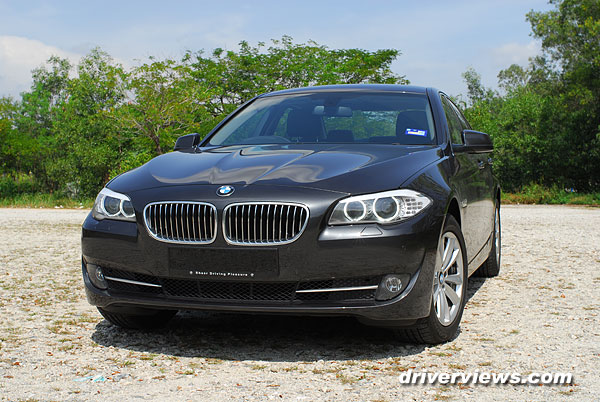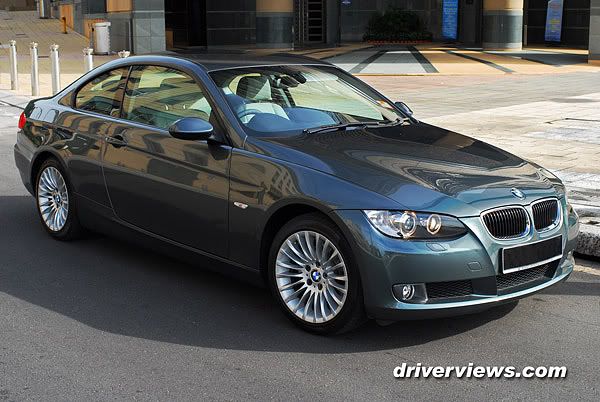
This car would probably elicit a double take for people who are familiar with BMW cars. The design of the rear end bears a striking resemblance to the latest M3 Coupé and one could easily mistaken this model for the famous thoroughbred.
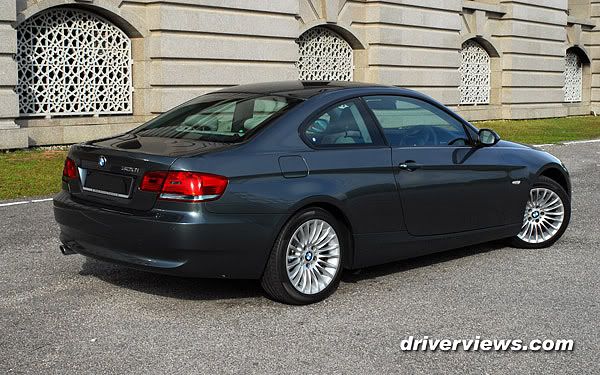
In terms of dimensions, the coupé is longer by 49mm compared to the 320i sedan. The sedan is slightly wider by 4mm and has more internal room in terms of width and height (especially for the rear seats) compared to the coupé. In terms of weight the coupé is lighter by 10kg than the sedan. (Source Data: BMW Brochure).
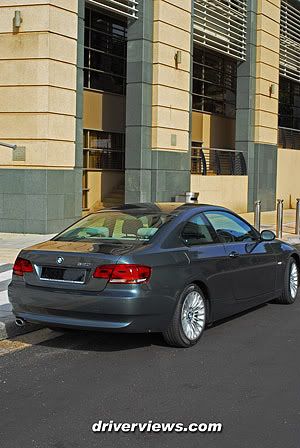
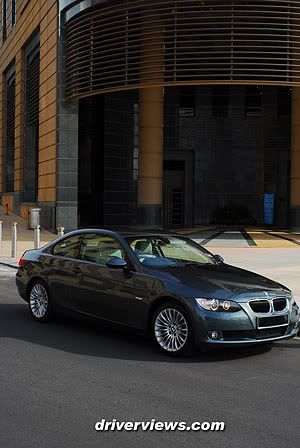
The sampled model is the entry level coupé model for the 3 Series. Its specifications and features mirror closely to the entry level 320i sedan. Surprisingly, the 320i sedan has better features. Some of the ‘missing’ features which I found for this coupé model included the Park Distance Control for front and the fold-in function for the side wing mirrors.
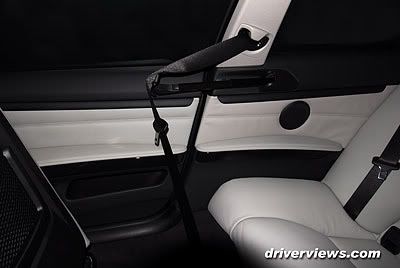
One unique feature of the coupé is the ‘electric seat belt handover’ for the driver and front seat passenger. This is essentially like a robotic arm which extends the seat belt forward for better reach. As with the 320i sedan, this model does not come with the I Drive.
Catering to a select demand, this 3 Series coupé model is imported in a Complete Built Up (CBU), fully assembled form for the Malaysian market.
DRIVING IT
For the driver and the front seat passenger, the coupé has a larger door for entry. Taller and larger frame drivers would probably prefer the extra leg room/space of the coupé. However, for the rear passengers, getting in and out of the car still need some effort.
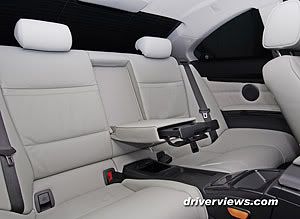
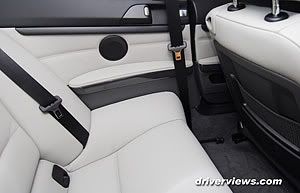
The car is strictly a 2+2 as there are compartments on the ‘middle’ rear seats which make it impossible to have a 3rd middle passenger in the rear. With a sloping roofline, rear passengers have lesser headroom compared to the sedan. Realistically, the rear seats of the coupé would only be comfortable for children or smaller frame adults. The rear seats also allow a 60:40 split-folding option (as per bottom right pic) enabling more boot space if required.


The engine and transmission are the same as the 320i sedan. The coupé comes with the sports leather steering wheel with multifunction buttons. This steering has a better feel and is easier to steer since it has a smaller diameter compared to the basic leather steering wheel of the 320i sedan.
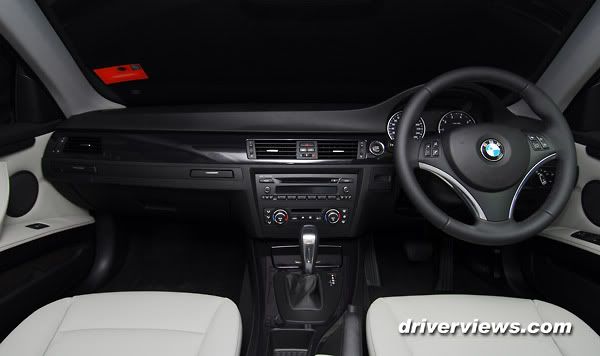
Similar to the 320i sedan, power is generally adequate for the car. The engine response could be better. Like its sedan counterpart, gear changes at full auto takes place at a higher rpm (have a listen on the sound file below). Perhaps this is to control the speed of the acceleration and add refinement to the ride. The brochure specified a 0.1 sec faster response time for the coupe from 0-100km/h compared to the sedan.
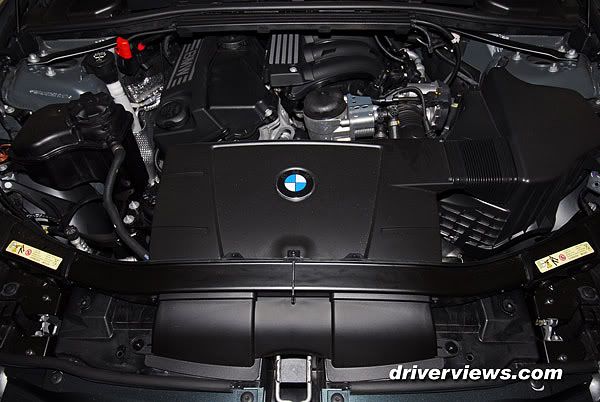
Fuel tank capacity is the same with the 320i sedan at 63 litres. Based on the brochure, fuel consumption appears to be similar with the sedan at 8.0 litres per 100km. In actual use I suspect the fuel consumption would be higher at around 10.0 litres per 100km. I checked the onboard computer and the current driver of this vehicle averages at around 10.2 litres per 100km. I assume that this is driving at full auto at all times. I recalled earlier that the 320i sedan’s onboard computer also gave a similar reading at around 10.2 litres per 100km.
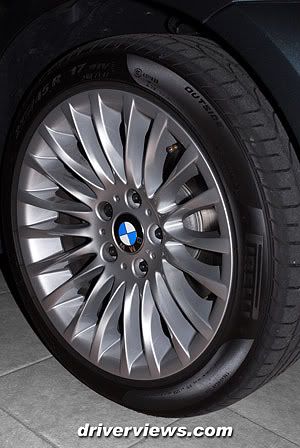
The car’s balance and handling is good. This car has a better grip in part due to better tyres. It came with a set of 17 inch Pirelli runflat tyres (225/45 R17) which offered better grip. Nevertheless, I did notice that it had a tendency to leave rubber marks easily on certain surfaces. It appears to be of a softer compound compared to the Continentals (on the 320i).
The suspension set up is suitable for the Malaysian roads which at times are less than ideal. The car is able to absorb humps and bumps without giving too much discomfort to the driver and passengers.
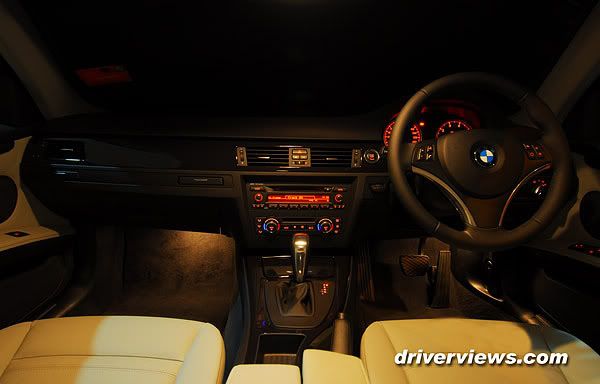
At night, the car’s overall internal lights including the reading lights are a tad dimmer than preferred. Hence, the overall lighting is not suitable for extended reading at night. The Xenon headlights aid in giving adequate illumination of the road ahead at night.

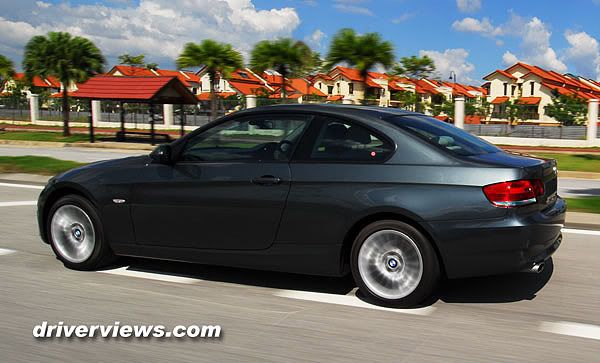
UPDATE (30/12/2009)
By sheer coincidence we managed to get hold of this same car again almost 2 months later. We had a pleasant surprise as the onboard computer indicated an average fuel consumption of 9 litres per 100 km, which was a great improvement. We took this car for a trip of around 400km, and at one point we managed to reduce the fuel consumption to around 8.9 litres per 100 km (ie cruising mostly at M6 on Steptronic where possible). The car had since been returned. Perhaps there are other ‘hidden’ possibilities with the car to further improve fuel consumption?
VITAL STATISTICS
| Engine: | 4-cylinder in-line petrol engine with Valvetronic | ||||
| Capacity: | 1,995cc | ||||
| Max Output: | 156bhp/6,200 rpm | ||||
| Max Torque: | 200nm/3,600 rpm | ||||
| Top Speed: | 218km/h | ||||
| Acceleration 0-100km: | 9.7sec | ||||
| Fuel Consumption: | 8.0ltr/100km | ||||
Source: BMW Brochure
Note: Please reconfirm the above specifications with an authorized BMW dealer
SOUNDS
Click on these to sample sounds from the car!
320i Coupe Ignition & Horn (Outside)
320i Coupe Acceleration (Outside)
